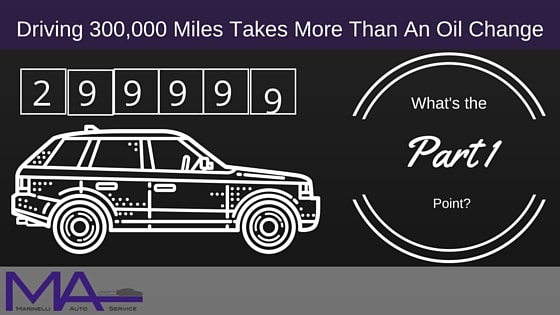What’s the Point?
As a nineteen year old college student, my parents helped me buy my first car. My dad and I did a lot of research and he wanted his first-born daughter to be safe 4 ½ hours away from home. Being a Chrysler family, we finally settled on a brand new Dodge Neon.
How ignorant I was to believe that once the sale was final, all I needed to worry about was gas, oil changes, and insurance! When the repairs got to be too overwhelming for me, even though I LOVED the Neon, I traded it in for a used PT Cruiser with lower mileage. That car, too, eventually needed repairs while still paying off the loan. I still miss my Neon.
More than a decade later, and the wife of a mechanic, I live with astute awareness of what it takes to keep a car running. Andrew and I now drive fully paid-off vehicles – a 1998 Chevy Prizm with just over 100,000 miles on it and a 1994 Toyota Corolla with almost 175,000 miles under its belt. We hope to still be driving those cars at 200,000 miles, and most likely 300,000 (by then, they will surely be classics!).
I now know that the sale price of the vehicle is not the only investment. By also investing in truly maintaining my car, I can keep it running smoothly through 300,000 miles or more.
So, why should I consider investing in my vehicle to 300,000 miles or more?
For one thing, investing in maintenance and repairs is a lot less expensive than buying a new car every 150,000 miles. Just like taking good care of our bodies by eating right, exercising, and getting routine check-ups can help us live a long healthy life, so does taking good care of our vehicles. However, if you were to sell the vehicle, staying on top of maintenance and repairs would maintain a better resale value to put toward your next investment.
Investing in vehicle maintenance also reduces your overall costs. Not letting needed repairs snowball, you avoid additional repairs and the money that goes along with it. For example, not changing the oil at the proper interval can cause premature engine failure. An oil change is so much more affordable than replacing an engine! Another example may be if a timing belt runs past it’s maintenance replacement, it can break and cause internal engine damage. Replacing the timing belt is significantly less expensive than repairing additional engine damage. Or, consider a failed ball joint which can cause the suspension to collapse which could cause further mechanical and body damage. Again, replacing the ball joint before it fails would prevent a lot of financially painful repairs.
Finally, if for no other reason, investing in maintaining your vehicle will ensure the safety of the driver, passengers, and any other vehicle driving near you.
Stay tuned for some practical tips for maintaining your car well in Part Two of this Three-part series.
